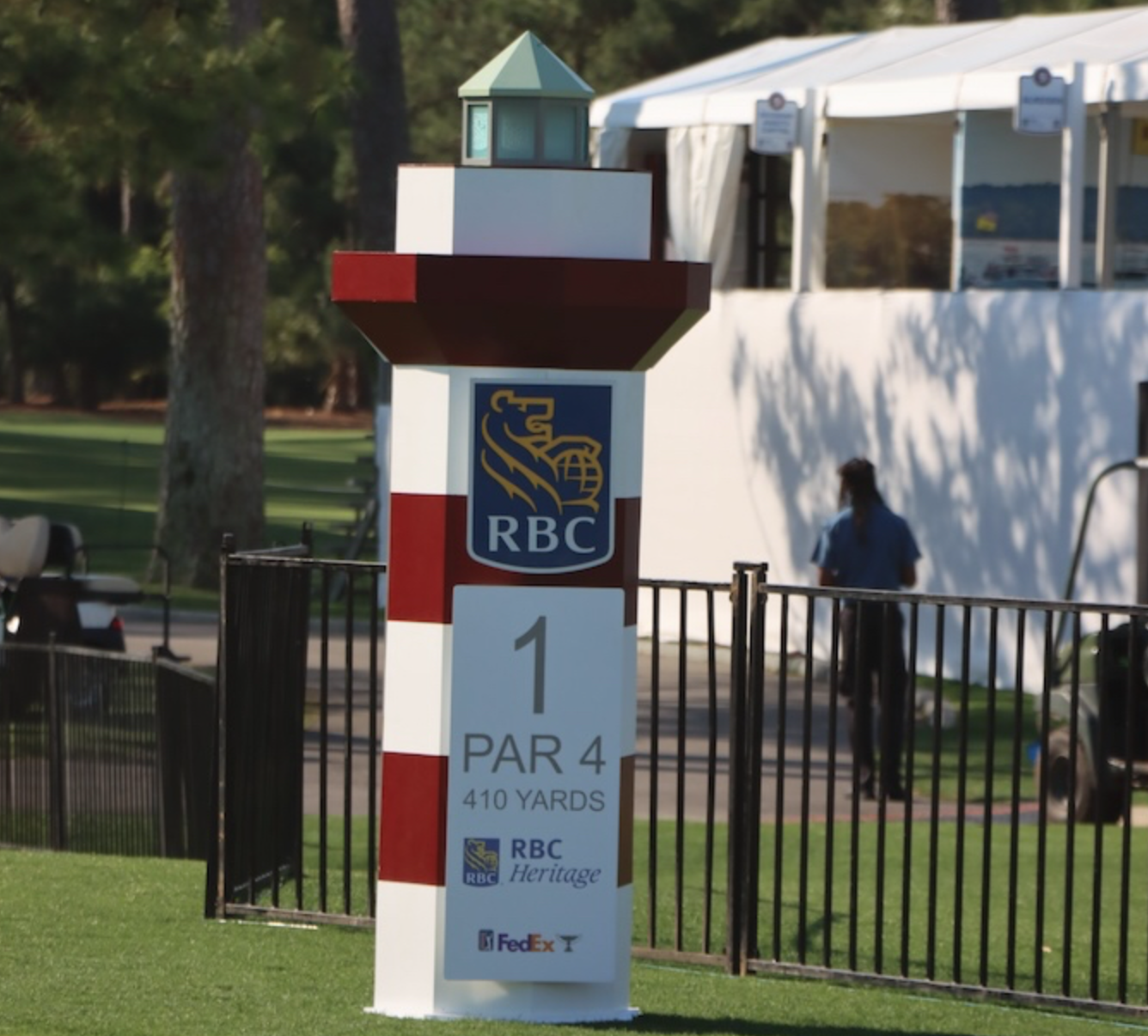Tour News
PGA Tour rolls out new Strokes gained: Tee-to-green statistic

Today, the PGA Tour is officially rolling out a new statistical metric: strokes gained: tee-to-green. In addition, the Tour will tally a combined “strokes gained: total”, which is an aggregate of the strokes gained-putting figure and strokes gained: tee-to-green.
As Steve Evans, the Tour’s head of Information Systems and overseer of the ShotLink system told Luke Kerr-Dineen of Golf Digest, “This is the next step of our evolution…we’re trying to create new performance metrics that are more telling than some of the current statistics.”
A report from PGATour.com indicates Mark Broadie of Columbia University (the man behind strokes gained-putting) initially developed the stat. A group from the Massachusetts Institute of Technology, which was led by professor Steven Graves, further refined the metric.
Strokes gained: tee-to-green lumps together all non-putts and sets that number relative to a field average the same way that strokes gained-putting does with putts.
The Tour has unofficially been tabulating strokes gained: tee-to-green for part of the 2013-2014 season.
As John Paul Newport of The Wall Street Journal, wrote back in March:
“If you’re looking for one simple number to explain John Senden’s victory last week at the PGA Tour’s Valspar Championship, try 2.17. That was the Australian journeyman’s “strokes gained-tee to green” statistic for the week. It beat by more than two strokes his season-average strokes gained-tee to green stat of 0.04 of a stroke per round.”
How does strokes gained: tee-to-green give a better indication of quality play than, say, greens in regulation? Luke Kerr-Dineen highlighted a pitfall of that metric:
“If Adam Scott, for example, only plays in the toughest events — events where it’s harder to hit greens in regulation — his greens-hit percentage will likely be lower than someone who only plays in events where it’s easier to hit greens. That essentially masks the fact that Adam Scott is the superior ball-striker of the two.”
In other words, as our Rich Hunt would surely agree, the best data is that which is relative.
When a golfer wins a tournament, we expect him to have fared well in strokes gained: tee-to-green. For example, Rory McIlroy was 2.8 strokes better than the field, tee-to-green, in his WGC-Bridgestone Invitational victory.
However, the figure offers some truly interesting insights that go beyond pointing out the obvious fact that the guy who won the tournament played better than the rest of the field.
As the Tour relates,
“In the opening round of the The Players Championship this year, Roberto Castro shot a 63, which was nine shots better than the field average of 72.01 that day.
Of those nine shots, Castro was eight shots better than the field from tee to green. He hit 13 of 14 fairways, and 15 of 18 greens, and averaged a field-leading 21-feet, 6 inches to the pin on all approach shots. He hit seven approach shots inside 15 feet and averaged nearly 12 feet closer to the pin than the field average of 34 feet.
Castro’s performance from tee to green that day allowed him to become the first player in the ShotLink era (starting in 2004) to shoot 65 or better at TPC Sawgrass’ Stadium Course without making a putt from outside 10 feet.
To illustrate the value of the strokes gained: total figure, the Tour provides the following example:
“Tiger Woods and Phil Mickelson were paired together in the final round of the 2012 AT&T Pebble Beach National Pro-Am. Mickelson went on to shoot a final-round 64 while Woods finished 11 shots higher with a 3-over 75.
The largest difference between their rounds came on the greens. Mickelson outperformed the field by 4.6 strokes on the greens while Tiger lost 4.4 strokes. For the round, Mickelson was 9 strokes better than Woods on the greens. Meanwhile, from tee to green, Mickelson outperformed the field by +3.1 strokes while Tiger was at +1.1, a two-stroke difference between the two players.
Combine Mickelson’s nine-stroke advantage in putting with his two-stroke advantage from tee to green, and his 11-shot difference equals the difference between his score and Tiger’s score.”
Of course, all of the strokes gained metrics are evolving and none are without issues. As Steve Evans told John Paul Newport, there are a few issues related to strokes gained: tee-to-green Broadie and company are working to sort out. On such issue is short-sided shots from around the green. Obviously, a short-sided pitch or chip is more difficult than one where a player has a wealth of green to work with. Thus, that information needs to be factored in when evaluating the average proximity to the hole on a shot from inside 15 feet.
It may seem elementary, but the metric substantiates things about winning golf we already suspected to be true. As Newport wrote earlier this year based on the data from Senden’s win, “To win, a player can’t seriously misfire in any aspect of his game for the week, but there’s almost always one particular area where he shoots lights out.”
While the above doesn’t have quite the same ring to it as “drive for show, putt for dough,” it’s more indicative of what it really takes to win on the PGA Tour and is likely the tip of the data iceberg we’ll be privy to thanks to strokes gained: tee-to-green.
- LIKE1
- LEGIT0
- WOW0
- LOL0
- IDHT0
- FLOP0
- OB0
- SHANK0
Tour Photo Galleries
Photos from the 2024 RBC Heritage

GolfWRX is on site this week at Harbour Town Golf Links on Hilton Head Island for the RBC Heritage. Plenty of golfers who competed in the Masters last week will be making the quick turnaround in the Lowcountry of South Carolina as the Heritage is again one of the Tour’s Signature Events.
We have general albums for you to check out, as well as plenty of WITBs — including Justin Thomas and Justin Rose.
We’ll continue to update as more photos flow in from SC.
Check out links to all our photos, below.

General Albums
- 2024 RBC Heritage – Monday #1
- 2024 RBC Heritage – Monday #2
- 2024 RBC Heritage – Tuesday #1
- 2024 RBC Heritage – Tuesday #2

WITB Albums
- Justin Thomas – WITB – 2024 RBC Heritage
- Justin Rose – WITB – 2024 RBC Heritage
- Chandler Phillips – WITB – 2024 RBC Heritage
- Nick Dunlap – WITB – 2024 RBC Heritage
- Thomas Detry – WITB – 2024 RBC Heritage
- Austin Eckroat – WITB – 2024 RBC Heritage
- Xander Schauffele – WITB – 2024 RBC Heritage
- Jason Day – WITB – 2024 RBC Heritage
- Will Zalatoris – WITB – 2024 RBC Heritage
- Patrick Cantlay – WITB – 2024 RBC Heritage
- Ludvig Aberg – WITB – 2024 RBC Heritage
- Collin Morikawa – WITB – 2024 RBC Heritage
- Sam Burns – WITB – 2024 RBC Heritage
- Stephen Jaeger – WITB – 2024 RBC Heritage
Pullout Albums
- Wyndham Clark’s Odyssey putter – 2024 RBC Heritage
- JT’s new Cameron putter – 2024 RBC Heritage
- Justin Thomas testing new Titleist 2 wood – 2024 RBC Heritage
- Cameron putters – 2024 RBC Heritage
- Odyssey putter with triple track alignment aid – 2024 RBC Heritage
- Scotty Cameron The Blk Box putting alignment aid/training aid – 2024 RBC Heritage

- Cameron putter – 2024 RBC Heritage
- Odyssey Ai One Eleven T putters – 2024 RBC Heritage
- Christian Bezuidenhout – testing new Callaway Ti 340 mini driver – 2024 RBC Heritage
- Rory McIlroy testing the new TaylorMade BRNR Mini Driver Copper – 2024 RBC Heritage
- Xander Schauffele testing the Callaway Ti 340 mini driver & the DUW – 2024 RBC Heritage
- Byeong Hun An, two new L.A.B. Golf putter builds with “T” alignment – 2024 RBC Heritage
See what GolfWRXers are saying and join the discussion in the forums.
- LIKE9
- LEGIT0
- WOW0
- LOL2
- IDHT0
- FLOP1
- OB0
- SHANK0
Tour Photo Galleries
Photos from the 2024 Valero Texas Open

GolfWRX is on site this week at the Valero Texas Open.
The event has been around since 1922, making it one of the oldest on the PGA Tour calendar. Over the years, it’s been held at a variety of courses across the Lone Star State, but it’s found its home at TPC San Antonio in recent years. Some of the biggest names in golf have taken home the title here, including Arnold Palmer, Ben Hogan, Lee Trevino, and Ben Crenshaw.
GolfWRX has its usual assortment of general galleries, WITBs and special pull-out albums. As always, we’ll continue to update the links below as more photos come in from TPC San Antonio.

General Albums
WITB Albums
- Ben Taylor – WITB – 2024 Valero Texas Open
- Paul Barjon – WITB – 2024 Valero Texas Open
- Joe Sullivan – WITB – 2024 Valero Texas Open
- Wilson Furr – WITB – 2024 Valero Texas Open
- Ben Willman – SoTex PGA Section Champ – WITB – 2024 Valero Texas Open
- Jimmy Stanger – WITB – 2024 Valero Texas Open
- Rickie Fowler – WITB – 2024 Valero Texas Open
- Harrison Endycott – WITB – 2024 Valero Texas Open
- Vince Whaley – WITB – 2024 Valero Texas Open
- Kevin Chappell – WITB – 2024 Valero Texas Open
- Christian Bezuidenhout – WITB (mini) – 2024 Valero Texas Open
- Scott Gutschewski – WITB – 2024 Valero Texas Open
Pullout Albums
- Cameron putter – 2024 Valero Texas Open
- Ben Taylor with new Titleist TRS 2 wood – 2024 Valero Texas Open
- Swag cover – 2024 Valero Texas Open
- Greyson Sigg’s custom Cameron putter – 2024 Valero Texas Open
- Davis Riley’s custom Cameron putter – 2024 Valero Texas Open
- Josh Teater’s custom Cameron putter – 2024 Valero Texas Open
- Hzrdus T1100 is back – – 2024 Valero Texas Open
- Mark Hubbard testing ported Titleist irons – 2024 Valero Texas Open
- Tyson Alexander testing new Titleist TRS 2 wood – 2024 Valero Texas Open
- Hideki Matsuyama’s custom Cameron putter – 2024 Valero Texas Open
- Cobra putters – 2024 Valero Texas Open

See what GolfWRXers are saying in the forums.
- LIKE16
- LEGIT3
- WOW6
- LOL2
- IDHT0
- FLOP0
- OB0
- SHANK0
Tour Photo Galleries
Photos from the 2024 Texas Children’s Houston Open

GolfWRX is on site in the Lone Star State this week for the Texas Children’s Houston Open.
General galleries from the putting green and range, WITBs — including Thorbjorn Olesen and Zac Blair — and several pull-out albums await.
As always, we’ll continue to update as more photos flow in. Check out links to all our photos from Houston below.
General Albums
- 2024 Texas Children’s Houston Open – Monday #1
- 2024 Texas Children’s Houston Open – Monday #2
- 2024 Texas Children’s Houston Open – Tuesday #1
- 2024 Texas Children’s Houston Open – Tuesday #2
- 2024 Texas Children’s Houston Open – Tuesday #3

WITB Albums
- Thorbjorn Olesen – WITB – 2024 Texas Children’s Houston Open
- Ben Silverman – WITB – 2024 Texas Children’s Houston Open
- Jesse Droemer – SoTX PGA Section POY – WITB – 2024 Texas Children’s Houston Open
- David Lipsky – WITB – 2024 Texas Children’s Houston Open
- Martin Trainer – WITB – 2024 Texas Children’s Houston Open
- Zac Blair – WITB – 2024 Texas Children’s Houston Open
- Jacob Bridgeman – WITB – 2024 Texas Children’s Houston Open
- Trace Crowe – WITB – 2024 Texas Children’s Houston Open
- Daniel Berger – WITB(very mini) – 2024 Texas Children’s Houston Open
- Chesson Hadley – WITB – 2024 Texas Children’s Houston Open
- Callum McNeill – WITB – 2024 Texas Children’s Houston Open
- Rhein Gibson – WITB – 2024 Texas Children’s Houston Open
- Patrick Fishburn – WITB – 2024 Texas Children’s Houston Open
- Peter Malnati – WITB – 2024 Texas Children’s Houston Open
- Raul Pereda – WITB – 2024 Texas Children’s Houston Open
- Gary Woodland WITB (New driver, iron shafts) – 2024 Texas Children’s Houston Open
- Padraig Harrington WITB – 2024 Texas Children’s Houston Open
Pullout Albums
- Tom Hoge’s custom Cameron – 2024 Texas Children’s Houston Open
- Cameron putter – 2024 Texas Children’s Houston Open
- Piretti putters – 2024 Texas Children’s Houston Open

- Ping putter – 2024 Texas Children’s Houston Open
- Kevin Dougherty’s custom Cameron putter – 2024 Texas Children’s Houston Open
- Bettinardi putter – 2024 Texas Children’s Houston Open
- Cameron putter – 2024 Texas Children’s Houston Open
- Erik Barnes testing an all-black Axis1 putter – 2024 Texas Children’s Houston Open
- Tony Finau’s new driver shaft – 2024 Texas Children’s Houston Open
See what GolfWRXers are saying in the forums.
- LIKE19
- LEGIT5
- WOW2
- LOL4
- IDHT0
- FLOP1
- OB0
- SHANK0
-

 19th Hole1 week ago
19th Hole1 week agoDave Portnoy places monstrous outright bet for the 2024 Masters
-

 19th Hole2 weeks ago
19th Hole2 weeks agoThings got heated at the Houston Open between Tony Finau and Alejandro Tosti. Here’s why
-

 19th Hole1 week ago
19th Hole1 week agoTiger Woods arrives at 2024 Masters equipped with a putter that may surprise you
-

 19th Hole2 weeks ago
19th Hole2 weeks agoReport: Tiger Woods has ‘eliminated sex’ in preparation for the 2024 Masters
-

 19th Hole4 days ago
19th Hole4 days agoTwo star names reportedly blanked Jon Rahm all week at the Masters
-

 19th Hole3 days ago
19th Hole3 days agoNeal Shipley presser ends in awkward fashion after reporter claims Tiger handed him note on 8th fairway
-

 19th Hole2 days ago
19th Hole2 days agoReport: LIV Golf identifies latest star name they hope to sign to breakaway tour
-

 19th Hole2 weeks ago
19th Hole2 weeks agoAddiction, spinal fusion, and scam artists – Everything Anthony Kim revealed in candid interview with David Feherty
















TheCityGame
Aug 26, 2014 at 12:04 pm
It will certainly be interesting to see what factors lead to winning any one particular tournament, but I want to see over the course of the year, what is better correlated with scoring/winning/cash.
Might finally put the “drive for show, putt for dough” guys out to pasture.
Pingback: PGA Tour rolls out new Strokes gained: Tee-to-green statistic | Spacetimeandi.com
Jason
Aug 25, 2014 at 3:30 pm
I read Broadie’s book “Every Shot Counts”. I thought it was a very interesting book. I’ve began to think of my rounds using the strokes gained thought process–even though I don’t really have the tour average numbers to go by. However, I can make an estimated guess on each shot, for my own ability, to determine where I gained and lost shots during a round. It’s really eye opening to think of my rounds like this. For example, I used to count fairways, greens, putts, etc. However, at the end of the day, none of this information really means anything. For example, if I missed every fairway during a round, did it hurt my score? I could have hit really nice, long tee shots that ended up 1ft in the rough and didn’t have much effect on my approach. Does 36 putts mean I putted well or poor? I could have hit every approach shot to 60 feet and made nice 2 putts–which would mean that my putting was pretty damn good and that I need to focus on either my approach shots or perhaps driving.
I can’t wait to see these stats appear on the PGA broadcast. Especially since they are so much more meaningful than the traditional stats.